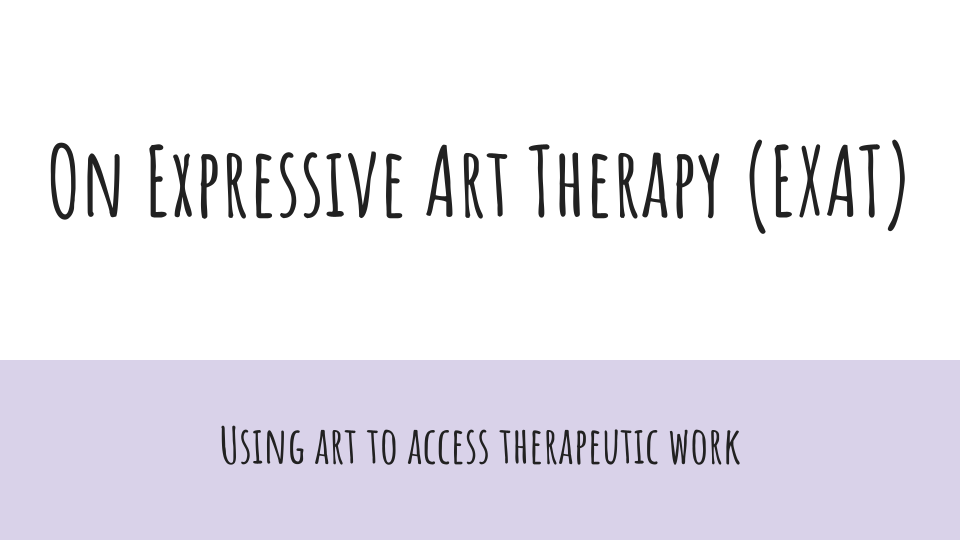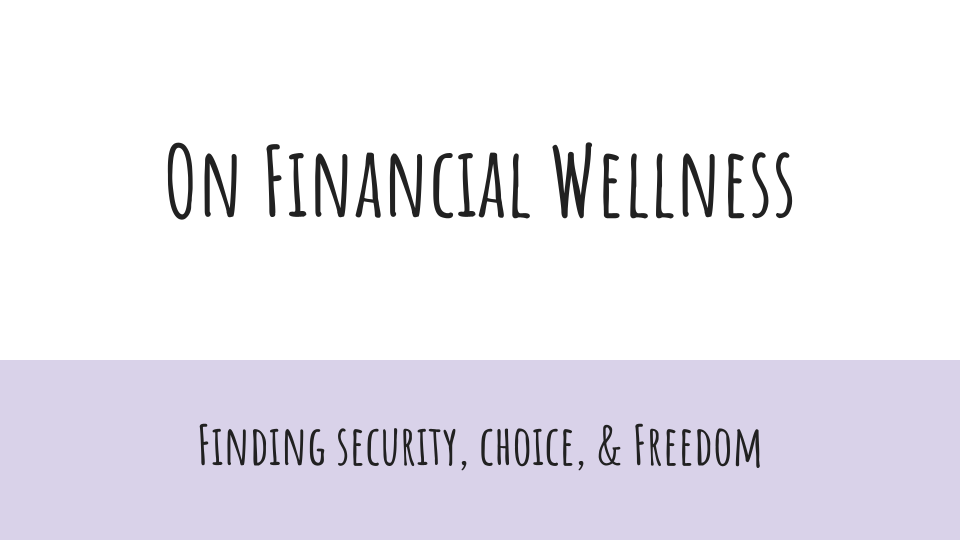On Attachment
Ever wonder why you pull away when your partner is acting "too needy?" Or why you feel the need to "cling" when you experience distance in a relationship? Attachment theory can help shed light on how you show up in relationships - either as anxious, avoidant, or secure.
Below you will find resources related to Attachment Theory.
More about Attachment Theory
What is Attachment Theory?
Attachment theory is a tool for understanding relationship dynamics, especially romantic relationships. This is another extension to differentiation, in the sense that it relates to health in both inter and intrapersonal dynamics.
In attachment theory, there are four kinds of attachment: secure, anxious, avoidant, and anxious-avoidant. According to the phenomenal book Attached by Amir Levine & Rachel S.F. Heller (included in the recommended book list), about 50% of the population is secure, 20% anxious, 25% avoidant, and 5% anxious-avoidant. Let’s break down the different styles of attachment.
Different Styles of Attachment
Secure
Comfortable with intimacy
Warm and loving
Reliable & consistent
Makes decisions with you
Flexible view of relationships
Communicates relationship issues well
Closeness creates further closeness
Anxious
Wants a lot of closeness in the relationship
Worries about rejection
Plays games to keep your attention and interest
Acts out instead of trying to resolve the problem between you
Lets you set the tone of the relationship so as not to get hurt
Avoidant
Sends mixed signals
Values their independence greatly, & uses that to create distance in the connection
Uses distancing strategies, either emotional, mental, or physical
Emphasizes boundaries in the relationship
Leaves you guessing about their feelings or intentions in the relationship
Anxious-Avoidant
A blend of the two depending on your partner / relationship issues
Some things to know about attachment:
Attachment styles are stable but plastic. That is, you are able to shift your attachment style depending on who you are in relationship with.
IE – if you are anxiously attached, but are in a relationship with a securely attached partner, it is possible to move towards a secure attachment for yourself.
It is only possible to shift towards secure if one partner is already secure
There is a common anxious-avoidant attachment dynamic in relationships called the “Anxious-Avoidant Trap.”
Common symptoms of this trap are: stable instability, the feeling of being ‘on a rollercoaster’ in the relationship, and an emotional counterbalance in self-worth and esteem (ie – avoidant inflates their ego, while anxious feels needy & incapable).
The anxious partner is the one who usually has to make concessions and accept rules imposed by the avoidant partner.
There is a push-pull dynamic – the anxious partner is pushing towards intimacy in the relationship, while the avoidant partner simultaneously pulls away.
Eventually the relationship comes to a head over this dynamic, with the anxious partner threatening something big (ie – threatening to leave the relationship or move out) and the avoidant partner concedes.
With avoidant’s concession, there is intense relief by anxious, creating intimacy in the relationship. With this increased intimacy, avoidant pushes away, anxious begins pursuing, and the cycle repeats itself.
This pursuit of ‘relief’ can create the roller-coaster effect in the relationship, one of mighty highs and long, massive lows.
You often inherit the attachment styles experienced in your family of origin.
How does this relate to other material in this classroom, like differentiation?
Remember, differentiation is the ability to hold onto your sense of self within the incredible pressures of a system – relationship, family, workplace, etc. Often, people with high levels of differentiation exhibit the behaviors of a securely attached individual. These behaviors include:
Ability to manage and express emotions effectively
Ability to communicate with values-focused language
Ability to empathize and connect with other’s emotions (attunement) without making their partner’s problems theirs to solve (boundaries)
Ability to balance need for independence with need for connectedness
All of this is in alignment with the idea that you inherit the same level of differentiation (and attachment) from your parents / family of origin. However, as differentiation and attachment are both plastic, you can change your level of health through focused self-work in & out of relationship. That is, you can move towards a secure attachment in relationship as you increase your level of differentiation.
What can I do with this Information?
It may be very tempting to begin analyzing your partner’s attachment style and determining their level of health in the relationship. However, I urge you to keep the focus of your attention on yourself and look at the ways you show up in the relationship. Explore this theory in greater depth by reading Attached or the other books listed below. Consider bringing your thoughts to our sessions together. Remember that it is a tool, and that you are capable of moving towards a secure attachment and thus are capable of finding greater stability and intimacy in your relationships.
Attachment Suggested Activities
Take time this week to consider the following activities related to exploring Attachment. There are several different options for you to explore, in case one modality works better for you. Please note that your Conversation Prompts can also make great Journal Topics.
Journal Topics
What attachment style do you most identify with? Write about your experience with having this attachment style - how does it show up in your relationships with friends? Family? Partners and romantic relationships?
How has this attachment style served you? In what ways has it not served you?
What attachment styles did you witness in your family of origin - how do you perceive your parents in attachment with each other? What about your parents in attachment with you and/or your siblings?
What sort of partners are you romantically attracted to? What do you notice about their attachment styles? Are there any themes here?
Has your attachment style shifted in the past? If so, how has it shifted?
In a perfect world, how would you want to show up in romantic relationships as a partner? As a friend? As a family member? What can you be working towards to get there?
Conversation Prompts
With your partner, discuss how you view your attachment style showing up in relationship. Talk about ways your attachment is supportive to the relationship, and times it can get in the way of creating intimacy and stability.
Talk about the connection between your emotional management and how that affects the ‘severity’ of your attachment symptoms. Consider ways you can be emotionally supportive of each other as you work towards a secure attachment.
Experiential & Artistic Activities
Create space in your week to make an artistic representation of your attachment style and how it shows up in your most important relationships. Pay attention to the process of creating this art. Choose to journal about the experience afterwards.
Make individual representations of the different attachment styles and see how they interact with each other. Consider the ways you have experienced these interactions in past relationships.
Additional Attachment Theory Resources
Documents/Books on Attachment Theory
Attached, by Amir Levine and Rachel S. F. Heller
Adult Children of Emotionally Immature Parents, by Lindsay Gibson
Handbook of Attachment, by Cassidy & Shaver
Attachment Theory in Practice, by Susan Johnson
Videos on Attachment Theory
Other Chapters in RELATIONAL/INDIVIDUAL
Check out the Rest of the Classroom!
References
Cassidy, J., & Shaver, P. R. (2016). Handbook of attachment : theory, research, and clinical applications (Third edition.). The Guilford Press.
Johnson, S. M. (2019). Attachment theory in practice : emotionally focused therapy (EFT) with individuals, couples, and families. The Guilford Press.
Levine, A. (2019). Attached: The New Science of Adult Attachment and How It Can Help You Find - and Keep - Love. Bluebird.
Simpson, J. A., Rholes, W. S., Eller, J., & Paetzold, R. L. (2021). Major principles of attachment theory: Overview, hypotheses, and research ideas. In P. A. M. Van Lange, E. T. Higgins, & A. W. Kruglanski (Eds.), Social psychology: Handbook of basic principles., 3rd ed. (pp. 222–239). The Guilford Press.
Simpson, J. A., & Rholes, W. S. (2015). Attachment theory and research : new directions and emerging themes. The Guilford Press.
Wiseman, H., & Egozi, S. (2021). Attachment theory as a framework for responsiveness in psychotherapy. In J. C. Watson & H. Wiseman (Eds.), The responsive psychotherapist: Attuning to clients in the moment. (pp. 59–82). American Psychological Association. https://doi-org.proxy006.nclive.org/10.1037/0000240-004
















